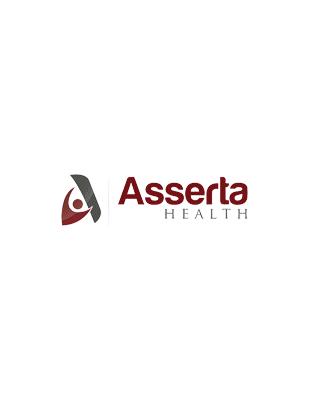

About Korb Matosich
Korb Matosich is the co-founder and president of Asserta Health. Korb has an unusual depth of experience managing all sides of healthcare payment. He oversaw both Revenue Cycle Management and Payment Integrity businesses at Ingenix, now Optum, at UnitedHealth Group. He also served as the CEO of AAPC, an organization that certifies billers and coders. He has a B.S. in Accounting from Brigham Young University and an MBA from Stanford University.

About Lisa Behnke, M.D.
Lisa Behnke, M.D., MHA, BSN, is the co-founder and chief medical officer of Asserta Health. She has extensive experience in clinical practice, utilization management, healthcare quality and payment policy in both provider organizations and health plans. She met Korb while working as the medical director for Fraud and Abuse at UnitedHealth Group.She has a B.S. in Nursing from Wagner College, an M.D. from Eastern Virginia Medical School, and an MHA from Medical College of Virginia.
About Asserta Health:
We founded Asserta Health after decades of experience in healthcare taught us that You Can’t Fix Healthcare Without Fixing Healthcare Payment. We provide Direct “Cash” Payment Solutions for self-funded employers and health plans. Our medEcash℠ Payment Platform, personalized concierge services, and custom-designed shared savings incentives work together to deliver significant savings and improve the healthcare payment experience for employers, plan members and providers. We make it possible for plan members to pay the full bill at the time of service, even when all or a portion of the funds comes directly from the health plan. It’s a Better Way to Pay for Healthcare.
US Domestic Medical Travel (USDMT): Your model is so unusual – please describe.
Korb Matosich (KM): Asserta Health enables direct payment for healthcare services, paid in full at the time of service delivery. We pay fixed cash prices for healthcare, and we pay providers in advance.
USDMT: When you say cash prices, can they use a credit card if they want to?
KM: Most people are not in a position to pay for expensive healthcare services using their own money. So, we’ve developed a payment platform that we call medEcash that allows us to stage funds from both the consumer, as well as the health plan, to pay providers in full at the time of service delivery. The bulk of the funds come from the health plan and not the consumer.
USDMT: What is your company’s revenue model?
Lisa Behnke (LB): We have designed our business model to align our own incentives with the plan. We charge flat per case fees, which are tiered based upon the complexity of the case. We only get paid when we deliver savings. Our fee is covered by the savings, but our fees are transparent and fixed, and we don’t take a percent of savings.
We do charge an implementation fee to cover our start-up costs because we customize the concierge service and incentives for each client, and we need their engagement to do that.
To date, all of our clients have recouped the implementation fee in savings within the first quarter of operation, most within the first month.
USDMT: Your relationship is with the health plan or direct with the employer?
KM: Correct. And when I say clients most of them are self-funded employers.
USDMT: Let’s be sure to make that distinction because people think of health plans as an organization rather than the employer.
KM: When we refer to a health plan, we mean whoever is responsible for paying the bill. In most cases, our clients are self-insured employers.
USDMT: Tell us about those employers. Are they Fortune 1000 companies? Small companies? Large companies?
KM: We’ve got 12 clients representing about 25,000 lives so they are not massive companies. We are working with a number of different entities: a large school district of about 7,500 lives, a fully insured carrier that represents about 9,000 lives, and a number of other self-funded groups that range from about 300 lives to about 2,500 lives.
USDMT: Where do you see your greatest growth?
KM: We believe that self-insured groups represent our greatest growth potential, particularly in Texas and Utah, where we are based. But we do have clients that have a presence in many other markets.
USDMT: Tell us how this works. You contract with the employer and then select the providers?
KM: To say that we select providers would be somewhat inaccurate. We basically identify providers that offer quality at a good price. We then let the plan members select where they want to go based on the economics, as well as the quality information.
USDMT: And what is that quality information based on?
KM: It is based on Medicare outcomes. We use data from a partner, Mpirica.com. They take Medicare outcomes and apply a proprietary methodology that creates a score for each hospital and surgeon on a procedure-by-procedure basis. It is all based on Medicare data.
USDMT: They perform on a surgeon level, as well?
KM: Correct. And it’s imperfect in that we’re serving a commercial population using Medicare outcome data. The problem is you can’t find good commercial outcome data largely because providers don’t want to share it.
USDMT: Are any of these providers located outside of the U.S.?
KM: We have not done an international case, although we certainly could. Our payment model is coupled with a concierge service so we enable payment at the time of service, and we also provide a concierge service to guide the plan member through the entire process. In some cases that does include travel. So far, we have only done domestic travel, but we could do international.
USDMT: How does an employer find out about you? Do you market directly to them?
KM: We typically work through consultant/broker partners or TPA partners, which is the common way employers learn about us. And they can come to us directly.
USDMT: What are their expectations? Save money? Get better quality? Meet the needs of their employees?
KM: All of the above are factors.
One of the things that we think is so powerful about this approach is that it generates savings for the plan, and delivers a better consumer experience because when you pay cash in advance for a service there isn’t a flood of bills and confusion after a procedure.
It’s a better experience for the plan member, and quality is baked into the process. Again, the member chooses based on our recommendation, which is based on both quality and price.
Typically, they save 20 to 50 percent, depending upon their procedure and the market. It also depends upon their starting point. We have a number of clients that pay 120 percent of Medicare, so generating substantial savings relative to that can be difficult because you’re already starting at a very low point.
The good news is we can generate savings in many scenarios. In the worst-case scenario, we are often meeting the reference price but doing so without a risk of balanced billing.
We can, for example, arrange for knee replacement at 120 percent of Medicare — just like the reference based pricing option would be, but there is no risk of balanced billing. And we typically charge much less than the reference based pricing vendors, so the plan saves.
USDMT: And the procedures that are most relevant to this model? Are there any that are more popular or more relevant?
KM: We do everything from MRI’s to open heart surgery.
Obviously, to pay for a procedure in advance, you need to know it’s coming so it is focused on elective procedures that are planned. MRI’s, colonoscopies, joint replacements, arthroscopies, general surgery, hysterectomies, women’s health, and deliveries – all of these are candidates.
USDMT: Are they typically bundled rates?
KM: As far as the customer is concerned, they appear to be that way, but it is not necessarily a comprehensive bundle from a single provider.
We pay each provider. The employer is paying one price, and we are distributing that payment to the provider so we actually make it easier for providers to offer bundled prices without having to have the administrative function of distributing the payments.
USDMT: What is the burden on the employer? There are no claims involved?
KM: There are no claims from the providers – part of the value proposition that we offer to the providers is immediate payment and reduced administrative hassle. They don’t have to worry about generating a bill or bad debt.
But our health plan clients – the self-insured employers – still need an administrative record of care so we generate that record.
LB: Once they have the price, procedure and diagnosis codes in their claims system, they don’t need to account for these costs in a separate system.
USDMT: What type of providers are we talking about?
KM: We try to adhere to the most appropriate place of service. So, we’ve done a number at surgery centers and at hospitals as well.
USDMT: Most surgery centers don’t take Medicare. How would you get that quality outcome information?
KM: In the case of the surgery centers, we are not using Medicare outcomes, but choosing the provider based upon the surgeons telling us that they are confident in the facility. Part of our philosophy is that the surgeon matters more than the facility in terms of generating a high-quality outcome.
USDMT: Do you deal with any of the employer purchasing coalitions?
KM: We have not worked with any purchasing coalitions, but are open to it.
Our message to them is, basically, if they’re looking at establishing a preferred relationship with providers, enabling them with cash payment is a way to turbo-charge those relationships.
We’ve worked out all the infrastructure so that can be done in a simple cost effective way without having to completely re-tool everything from scratch.
If you have innovative providers that are willing to entertain new business models, this is a great way to drive value for the provider with the plan and consumer paying up front. It is the ultimate in transparency and eliminates a substantial amount of administrative overhead.
LB: We also do private labeling where we create a concierge service that is for a group of employers that come together. We can certainly do that for a coalition if they wanted to create a special program for their members.
USDMT: Is there anything else that compares?
KM: Well, in terms of the cash payment platform and service, we are unaware of anybody else doing exactly what we are doing.
We believe that paying cash for healthcare services is a much better model across the entire spectrum of care, and our platform is set up to do that.
We are focused on high-cost elective procedures as our initial point of entry place, but over time, we believe cash payment can really apply to just about anything. Estimates shows that as much as 20 to 30 percent of healthcare costs are wasted on administration.
USDMT: Does your model fit the direct-to-employer contracting scenario?
KM: Yes, but we also operate in situations where there isn’t a direct contracting relationship per se.
We are a value-added benefit that is offered to an employer’s health plan members. When they utilize our services, they can save on out of pocket costs and get a better experience. So, it is very complementary with direct contracting.
LB: We are not restricted to places where we have contracts. We are basically open to using any provider that offers acceptable value and cash prices, and is willing to work with us.
USDMT: Let’s say you have a relationship with an employer who has 2,500 employees. Do you support the employer introducing this option to the workforce? Are there marketing materials? Do you go in and do an on-site presentation?
KM: We do participate in educating the plan member, and offer various strategies.
The right education strategy depends on the employer. We help them craft a very simple message about saving out of pocket costs.
USDMT: Do you help the employer formulate the benefit plan that would waive deductibles or copays if they choose certain providers?
KM: We believe that cash payment is complimentary with any plan design, but all of our clients have implemented what we call a shared savings program based on creating the right incentive that fits with a specific plan design.
In some cases, we have clients that have very rich plans and in some cases, there’s co-pay plans – no deductible, no-coinsurance, just copays. And the shared savings in that case might be to waive all cost sharing.
Our favorite approach is actually for the plan to share 50 percent of savings generated by using our service up to some sort of cap. So, beyond the cap, the plan retains the rest of the savings.
One of the problems with most health plans is when people hit their out of pocket maximum they really don’t care about what they’re doing because they’re not spending their own money. With the shared savings incentive, people who hit their out of pocket maximum actually get a check from their plan that basically offsets prior medical expenses, and it gets them to think very differently about their healthcare consumption.
USDMT: Please explain your concierge services. If I’m an employee and I decide I’m going to take advantage of this, what happens next?
KM: They place a call to us.
We start off by listening and understanding what their condition is and the recommended procedure. We find out if they have providers they’ve already selected that they’d like to work with. If so, we try first and foremost to work with those selected providers to see if we can get a cash arrangement.
But we are also simultaneously sourcing other options based on value. If they originally wanted to go with Dr. Jones for a knee replacement, we educate them fully about the best arrangement that we are able to make
Maybe they have a $3,500 out of pocket maximum. So, we say; ‘If you’re going to go with Dr. Jones at Community Hospital, it is going to hit your $3,500 out of pocket maximum. But we’ve also made an alternative option with Dr. Smith at this other facility that has great quality. When the shared savings kicks in you’ll get $2,000. If you choose this you’ll only have to pay $1,500 out of pocket and not $3,500.”
We also help with pre-certification, medical record transfers or travel arrangements, and in general make sure they understand what is going on. We are there to guide them step by step through the entire episode.
USDMT: If somebody was going for a joint replacement and they needed physical therapy (PT) afterwards, how would that work?
KM: That will depend a lot on our clients.
In some cases, we will direct them back to an in-network PT provider, if they have one. In other cases, we’ve worked out cash arrangements for the PT component.
It just depends on where we can deliver value because in some cases there are really good existing alternatives.
Sometimes it is clear that by paying cash we’re not going to generate that much incremental savings so we don’t tread where we can’t add value.
And there are other cases where people really needed assistance. So, we worked out a per visit rate on a cash basis and continue to pay cash throughout the PT episode. It really depends on where the need exists.